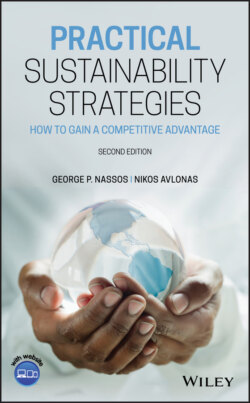Читать книгу Practical Sustainability Strategies - George P. Nassos - Страница 45
Dow Measures Up
ОглавлениеBy any measure, Dow is a sustainability leader.
Dow has been listed in the Dow Jones Sustainability Index nine times. They have won “green” awards from Michigan to China for their wide array of products from insecticides to solar panels. And in 2006, CEO Andrew Liveris enthusiastically announced seven new sustainability goals for 2015 even after the company had already met or exceeded many of its 1996 sustainability goals. In that initial 10 years span, they saved more than US$5 billion in bottom-line costs.
Yet probably their most impressive feat to date might be their array of clear and simple bar graphs that dot the end of each of their quarterly sustainability reports. These simple beige and green charts aren't flashy—they probably were produced right in an Excel spreadsheet. But it is the function of these graphs that make them so meaningful and compelling, based on what they represent.
First, whether one particular graph is showing their product safety leadership or the intensity of greenhouse gas emissions, you can immediately see the upward or downward trajectory of the company. Their goals are always marked with a simple black line, and for the most part, the green and orange bars show that they are hitting their intended targets. Dow's progress is clear.
Second, Dow may have some of the most complete, public, and long-range sustainability data available. It is immediately evident that the company keeps great records of the data that they produce. This meticulous study certainly seems central to the corporate culture, with good reason—Dow is driven by the exacting art and science of chemistry, which demands precision from heaps of data. Dow's progress is credible.
The data are so complete that their sustainability managers are able to make sense of specific anomalies when they occur. For instance, in 2009, the company's intensity of greenhouse gas emissions (the amount of energy used to create a single pound of finished product) increased 5%, which went in the opposite direction after four years of downward progress. They were able to attribute this slide to lower operating efficiencies of their production facilities during the worldwide recession. In short, they could see exactly what the effect underutilizing their facilities had on their overall emissions levels—a fantastic feat for any company as large as Dow. Dow's progress can be meticulously tracked.
There is not a company in the world that can claim to be operating in a “sustainable” way, and Dow most certainly has a long way to go to get beyond doing “less bad” and claim that they have no negative impacts on social and ecological systems. But one thing is clear: with the help of their simple bar graphs, Dow will probably know it the exact moment when they do get to that point!
